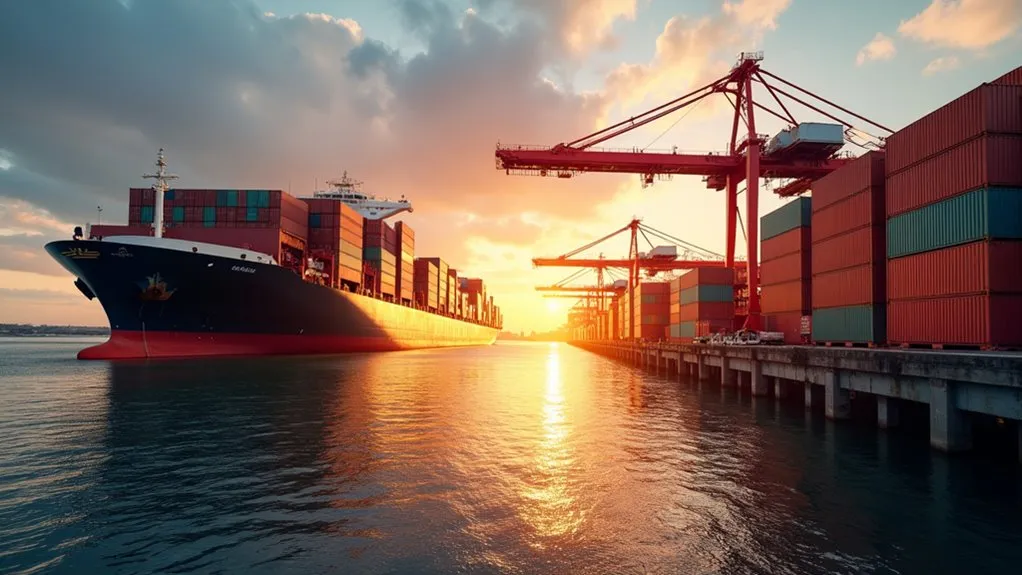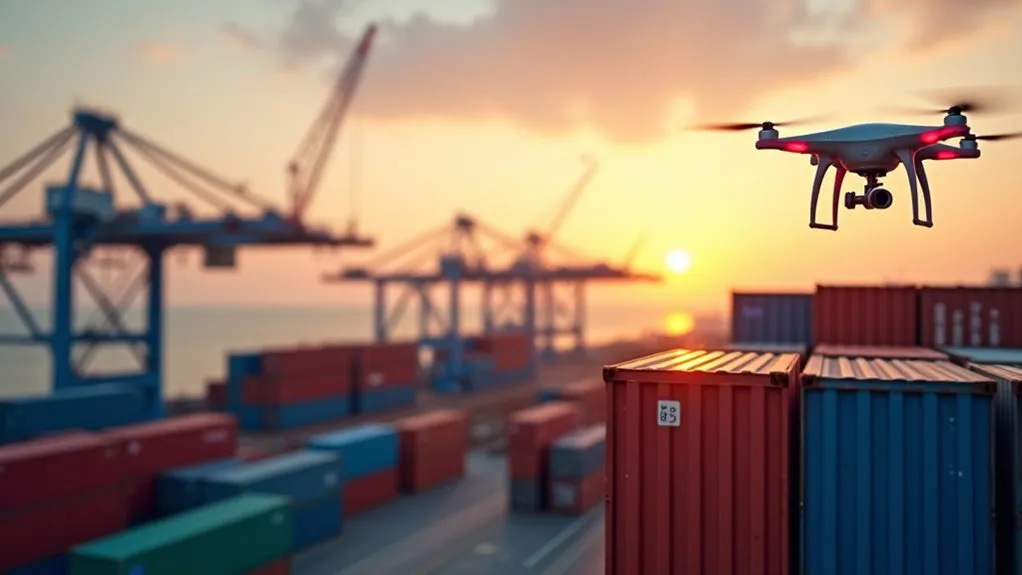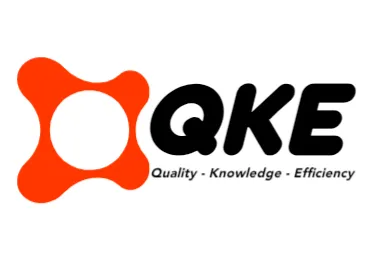Container tracking is vital for efficient shipping, offering stakeholders real-time visibility into global goods movement. Unique identifiers like Container Numbers and Bill of Lading Numbers enable precise monitoring via carrier portals. Technologies such as IoT sensors and AI-driven analytics enhance route optimization and ETA accuracy, achieving up to 25% efficiency gains. Challenges like data inconsistency and regulatory hurdles persist, yet innovations like blockchain promise solutions. Explore further to uncover strategic insights for mastering track and trace.
Key Takeaways
- Utilize unique container numbers and identifiers like Bill of Lading for precise tracking across logistics networks.
- Leverage IoT sensors and 5G for real-time location and condition monitoring of containers.
- Implement AI-driven analytics to optimize routes and predict accurate ETAs for shipments.
- Address data inconsistency and visibility gaps with AIS and centralized tracking platforms.
- Adopt blockchain for secure, transparent documentation and streamlined shipping processes.
Understanding the Basics of Container Tracking
Container tracking forms the backbone of modern supply chain management, offering a systematic approach to monitor the location, status, and condition of shipping containers across their global journey. Under the umbrella of Basic Definitions, it involves a meticulous process of recording data on container movements, ensuring visibility from origin to destination. This mechanism is critical for stakeholders like shippers and forwarders to oversee shipment progress within complex global logistics networks. By leveraging advanced technologies, container tracking provides real-time visibility into the supply chain, enabling better decision-making and issue resolution.
Delving into Identifier Essentials, each container is assigned a unique Container Number, comprising four letters and seven numbers, acting as a distinct marker. Additionally, identifiers like the Bill of Lading Number and Booking Number provide critical links to specific shipments and reservations. These codes enable precise tracking through carrier portals or third-party platforms, delivering data on current location, status updates, and estimated arrival times. Such identifiers underpin operational planning, enhance security, and drive efficiency in supply chain operations.
Leveraging Technology for Enhanced Visibility
While traditional methods of container tracking laid a foundational framework, the integration of advanced technologies has revolutionized visibility in supply chain management. IoT sensors, delivering real-time data on location and conditions like temperature or humidity, enable precise monitoring of containers globally through 5G connectivity. AI and predictive analytics further enhance forecasting, optimizing routes and improving ETA accuracy by analyzing vast datasets, with efficiency gains like Maersk’s reported 25% improvement.
Centralized visibility platforms aggregate this data into unified dashboards, supporting real-time tracking and customizable alerts. Integration Strategies, such as API-driven connections with ERP and TMS systems, ensure seamless data flow for streamlined operations. Meanwhile, Metrics Evaluation through performance analytics identifies bottlenecks and assesses carrier efficiency using historical data. Blockchain adds security with immutable records. Collectively, these technologies empower stakeholders with actionable insights, driving strategic decisions and operational excellence in container tracking across complex supply chains.
Overcoming Common Tracking Challenges

How can supply chain stakeholders navigate the myriad obstacles that hinder effective container tracking? The complexity of global logistics presents persistent challenges, such as Data Inconsistency, where delayed or missing updates create blind spots. Studies reveal that 17% of tracked vessels are misidentified due to unreliable data, necessitating alternative sources like AIS for accuracy. Fragmented systems across carriers, ports, and terminals further complicate data integration, demanding strategic consolidation to eliminate silos.
Moreover, Regulatory Hurdles add layers of difficulty with diverse compliance requirements across regions, slowing down processes and increasing costs. Stakeholders must adopt standardized protocols to streamline documentation and customs clearance. Addressing visibility gaps, especially at transshipment points and terminals, requires robust, real-time tracking solutions. By prioritizing data quality and fostering collaboration among partners, the industry can mitigate human errors—responsible for over 80% of disruptions—and build resilient systems to manage external disruptions like port congestion or geopolitical tensions.
Exploring Future Innovations in Container Management

As the logistics industry evolves, emerging technologies are poised to revolutionize container management with unprecedented precision and efficiency. IoT-enabled smart containers, equipped with sensors for real-time monitoring of location and conditions, are enhancing visibility, while AI and machine learning analyze data to predict delays and optimize routes, reducing costs. Blockchain ensures transparency with tamper-proof records, streamlining documentation and bolstering security.
Looking ahead, sustainability drives innovation with containers crafted from Bio Materials, minimizing environmental impact, and reefer units prioritizing Energy Efficiency through advanced insulation and power-saving designs. Automation, including robotic cranes and autonomous ships, promises faster port operations, cutting turnaround times. Smart ports, integrating AI and IoT, aim to boost throughput, though infrastructure costs remain a hurdle. With market trends favoring full fleet IoT coverage and predictive maintenance, the future of container management hinges on data-driven strategies and green technologies for a resilient, efficient supply chain.

 Tiếng Việt
Tiếng Việt 日本語
日本語 中文 (中国)
中文 (中国) 한국어
한국어